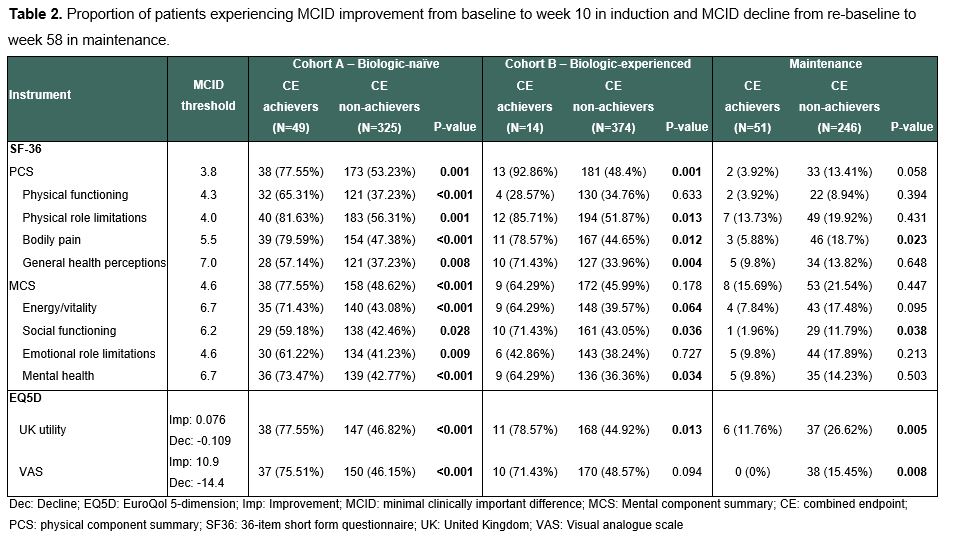Exabis Library
Welcome to the e-CCO Library!
Everyday poisons: Smoking, pollution, stress, sedentary lifestyle
2017
ECCO'17 Barcelona
Friday, 9 April 2021, 11:15 AM by Admin User
1
Everything you need to know about surgery
2022
16th N-ECCO Network Meeting
Tuesday, 24 May 2022, 8:13 PM
Evolution of disease pathways over time in CD – early versus late disease
2018
ECCO'18 Vienna
Friday, 23 March 2018, 12:23 PM
1
Examples of atypia - slide seminar (Tandem talk)
2020
5th H-ECCO IBD Masterclass
Tuesday, 23 June 2020, 5:40 PM
Expanded genome-wide association study of Inflammatory Bowel Disease identifies 174 novel loci and directly implicates new genes in disease susceptibility
2022
ECCO'22 Virtual
Tuesday, 24 May 2022, 8:13 PM
Expectations of histopathologists
2017
Talking Heads
Friday, 22 February 2019, 3:31 PM by ECCO Administrator
Wednesday, 2 June 2021, 11:44 AM by ECCO Administrator
Exploring disease control by combining clinical, biological, and health-related quality of life remission with endoscopic improvements among Ulcerative Colitis patients treated with filgotinib: A post-hoc analysis from the SELECTION trial
2022
ECCO'22 Virtual
Tuesday, 24 May 2022, 8:13 PM
Exposome
2017
15th IBD Intensive Advanced Course
Friday, 4 June 2021, 11:37 AM by ECCO Administrator
1
Extraintestinal manifestations
2022
20th IBD Intensive Course for Trainees
Tuesday, 24 May 2022, 8:13 PM
Extraintestinal Manifestations in IBD
2017
Educational Audio Podcast
Friday, 28 February 2020, 11:11 AM by Dauren Ramankulov
Monday, 17 August 2020, 10:55 AM by Dauren Ramankulov
Faecal calprotectin thresholds to uncover mucosal inflammation in patients with clinically quiescent UC
2019
JCC Podcast
Monday, 30 September 2019, 10:48 AM by Dauren Ramankulov
Tuesday, 13 October 2020, 3:51 PM by Dauren Ramankulov
Faecal microbial transplantation in Ulcerative colitis - a role as maintenance therapy?
2019
JCC Podcast
Monday, 2 September 2019, 4:24 PM by Dauren Ramankulov
Friday, 28 February 2020, 12:35 PM by Dauren Ramankulov
Faecal Microbiota Transplantation
2019
Talking Heads
Friday, 28 February 2020, 3:51 PM by Dauren Ramankulov
Wednesday, 2 June 2021, 12:10 PM by ECCO Administrator
Faecal microRNAs in health and IBD
2019
JCC Podcast
Monday, 30 September 2019, 10:47 AM by Dauren Ramankulov
Friday, 28 February 2020, 1:32 PM by Dauren Ramankulov
Faecal transplantation as a treatment in IBD
2021
15th N-ECCO Network Meeting
Friday, 1 October 2021, 12:41 PM
Fair Data Principles
2019
Talking Heads
Friday, 28 February 2020, 3:49 PM by Dauren Ramankulov
Wednesday, 2 June 2021, 12:09 PM by ECCO Administrator
Fecal calprotectin can predict histological activity?
2022
7th H-ECCO IBD Masterclass
Tuesday, 24 May 2022, 8:13 PM
Fecal Transplantation
2014
Talking Heads
Friday, 22 February 2019, 4:45 PM by ECCO Administrator
Wednesday, 2 June 2021, 9:44 AM by ECCO Administrator





